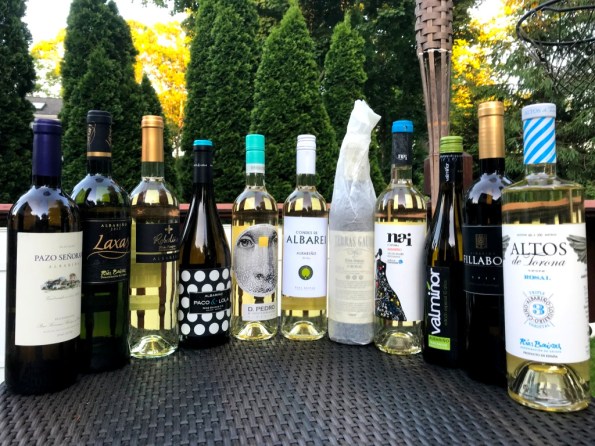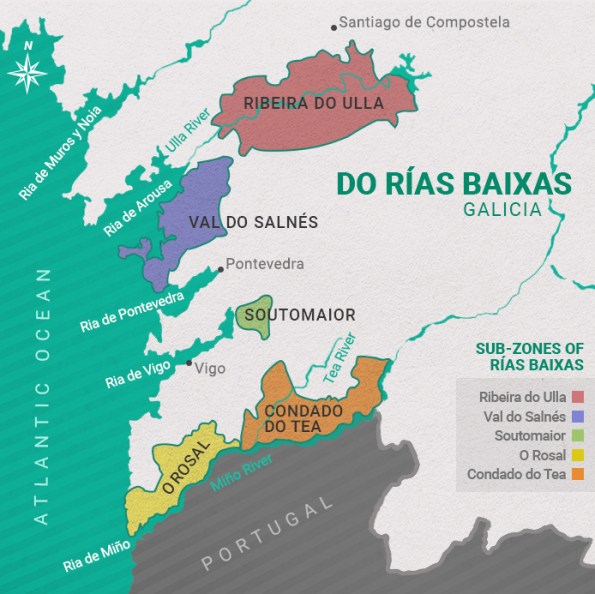Archive
Sauternes – Sweet, Versatile, Delicious, And Perfect for Every Day
 Today we are going to talk about sweet and delicious wines, but I feel compelled to start with a little rant.
Today we are going to talk about sweet and delicious wines, but I feel compelled to start with a little rant.
What is wrong with you, people?
No, I’m not trying to better humankind with this pathetic opening, but nevertheless, I would like to repeat my question – what is wrong with you, people, when you proudly state “hmm, you said sweet? I don’t drink sweet wines!!” (add proud grin and posture to this statement). Sweet or dry, when it comes to wine, there is only one quality worth inquiring about – balance. “Is this wine balanced?” is a perfect question to ask, but sweet, dry, semi-sweet, semi-dry – those are all relative characteristics which often mean different things to different people.
Deep inside, we like sweet. We don’t always admit it as our well established societal shaming machine works perfectly, it creates an absolute truth like “sweet = bad”. Sweet is one of the easiest flavors to recognize, and we usually start our acquaintance with taste with sweet, later discovering sour, salty and bitter. Growing up, we learn that “sugar is bad for you” – which is true for anything taken out of moderation – and then we subconsciously extend “sugar = bad” rule to the most of the things we do, or rather, eat.
Now, I’m asking you to put these extreme views of sweet aside, at least for the next few minutes you will spend reading this post. I know, you can do it for me. Let’s go, let’s talk about it – yes, sweet wines.
Historically, sweet wines had been around for as long as humans known to make wine. Sweet wines are typically easier for our palate to fall in love with, but keep that love going strong might be a challenge, as people change their taste quite often. Today, sweet wines are made everywhere – but in most of the cases, sweet wines are an addition to the winery’s repertoire, to all those white, Rosé and red which winery is generally producing – and not The Wine. Except in few places, it really is The Wine. One such place is located in the world’s capital of red wines – Bordeaux, and yes, it is called Sauternes.
Sauternes region is located about 40 miles south of the city of Bordeaux, and predominantly produces sweet wines (there are some notable exceptions like d’Yquem Y, which is a dry wine, but those are truly the exceptions). History of Sauternes goes back to the beginning of 17th century, but it is hard to tell what led to the appearance of the Sauternes wines as we know them.
You see, Sauternes wines are made with some special assistance from mother nature. This appearance comes in somewhat of a strange form – a fungus. The climate conditions in Sauternes are favorable for the specific form of mildew to set on the grapes, so the grapes essentially rot on the vine. It is manifested with the grapes starting to shrivel while they are still hanging in the cluster – however, outside of visually unappealing sight (for the rest of us, not for the vintners in Sauternes), that also leads to the shriveled grapes greatly increasing concentration of the sugar, which perfectly lends itself to creating some of the very best sweet wines in the world – yes, the Sauternes.
The fungus, which has a scientific name of Botrytis cinerea, is also called a Noble Rot, just to stress that unlike any other rot, which is generally bad, the Noble Rot is good and useful, and thus has such a distinguished name. The legend has it that monks who were the first to produce sweet Sauternes, were keeping information about the rot outside of the public knowledge, as whether you will call it Noble or not, it is not easy to explain to people that wine is delicious because the grapes had time to rot before been made into the wine.
Production of Sauternes is labor intense, even today. Not only all the grapes are harvested by hand – they also harvested multiple times. The workers can only pick individual grapes from the vine, those which are ready (read: rotted shriveled enough). Then they have to come back again to pick the new “ready” grapes – and this can repeat 6-7 times. So yes, talk about labor intense process.
All this pain with the harvest is well worth it, as it translates into the delicious wines. What is very interesting about Sauternes, which is typically well underappreciated, is that Sauternes are amazingly versatile when it comes to food. You can pair the whole dinner with Sauternes, but while this might be a bit challenging, they definitely beat most of the wines, maybe with the exception of Champagne/Sparkling, as a perfect accompaniment to any appetizers and cheese course. The Foie Gras and Sauternes is a classic combination, but it pairs spot on with any salumi, prosciutto, Jamon or any other cured meat. Salty, spicy, sour, bitter – bring it on, all the flavor profiles will find their match with Sauternes.
A few weeks ago we had an opportunity to deep dive into the world of Sauternes with the virtual tasting run on Snooth – if you are interested in following the conversation, you can check out this post on Snooth. To prepare for the discussion, I had a pre-gaming session, pairing our selection of Sauternes with cheeses and Foie Gras, as you can see in the pictures above. I have to honestly say that I liked some wines better than the others, which you will see in the notes – but when it comes to complementing the food, they all performed really well.
There are plenty of sources for you to learn the particular details about the Sauternes wines and the region so I will spare you from my regurgitating of the known facts. Just as a quick reference, I can tell you that Sauternes wines predominantly made from Sémillon grapes, with Sauvignon Blanc and Muscadelle playing the supporting roles. Our tasting included wines from 2009, 2014 and 2015 vintages, which are all considered excellent.
Without further ado, here are my notes:
2015 Château Manos Cadillac AOC (14% ABV, $12.99, 98% Semillon, 2% Muscadelle, 50% of wine aged in barrels for 6 months)
C: golden
N: apricots, herbs
P: nice sweetness, apricots, touch of peach
V: 7+
2015 Château Haut Charmes Sauternes AOC (14% ABV, $20, 80% Semillon, 20% Sauvignon Blanc, aged in barrels)
C: light golden
N: touch of petrol, apricot, honeysuckle,
P: white fruit, honey, good acidity, appears light
V: 7+
2014 Château Lauvignac Sauternes AOC (% ABV, $18.99/375 ml, 85% Sémillon, 10% Muscadelle, 5% Sauvignon)
C: straw pale
N: Classic bortrized fruit, touch of honeysuckle
P: clean acidity, orange, bitter orange on the finish
V: 7
2014 Château La Rame Sainte Croix du Mont AOC (13.2% ABV, $20, 100% Sémillon, 50 yo vines, 30% aged in oak batrrels)
C: golden
N: rich, opulent, honey, bortrized notes, very inviting, touch of petrol
P: beautiful, round, honey, apricot, peach, intense, perfect acidity
V: 8, best of tasting
2014 Château du Cros Loupiac AOC (14% ABV, $15, 90% Sémillon, 5% Sauvignon, 5% Muscadelle, 12 months in barrique)
C: golden
N: intense honey
P: mostly honey, needs more acidity
V: 7
2014 Château Lapinesse Sauternes AOC (% ABV, $39.99, 100% Sémillon, 12 months in stainless steel)
C: light golden
N: dry, white stone fruit
P: sweet, mostly single note
V: 7
2009 Château FILHOT Sauternes AOC (13.5% ABV, $40, aged for 22 months including 12 months in oak barrels)
C: very light golden
N: honeysuckle, delicious, very promising
P: honey, candied orange, nice, touch more of acidity would be nice
V: 7+
2009 Château Dauphiné Rondillon Loupiac AOC (% ABV, $28, 70% Semillon, 30% Sauvignon Blanc)
C: light golden
N: muted, touch of honeysuckle
P: touch of candied orange, good acidity, but overall is just ok
V: 7
The holiday season is upon us. While I’m not asking you to pair your Thanksgiving turkey with the Sauternes (albeit it might work very well – and I will actually try it), I definitely suggest you will give Sauternes a chance to brighten up your friends and family get together – that “wine and cheese” fun is generally overrated and underestimated at the same time, as majority of the wines don’t pair that easily with the cheese – but try it with Sauternes, and you might discover a new love in your life. Cheers!




























































